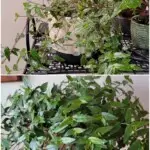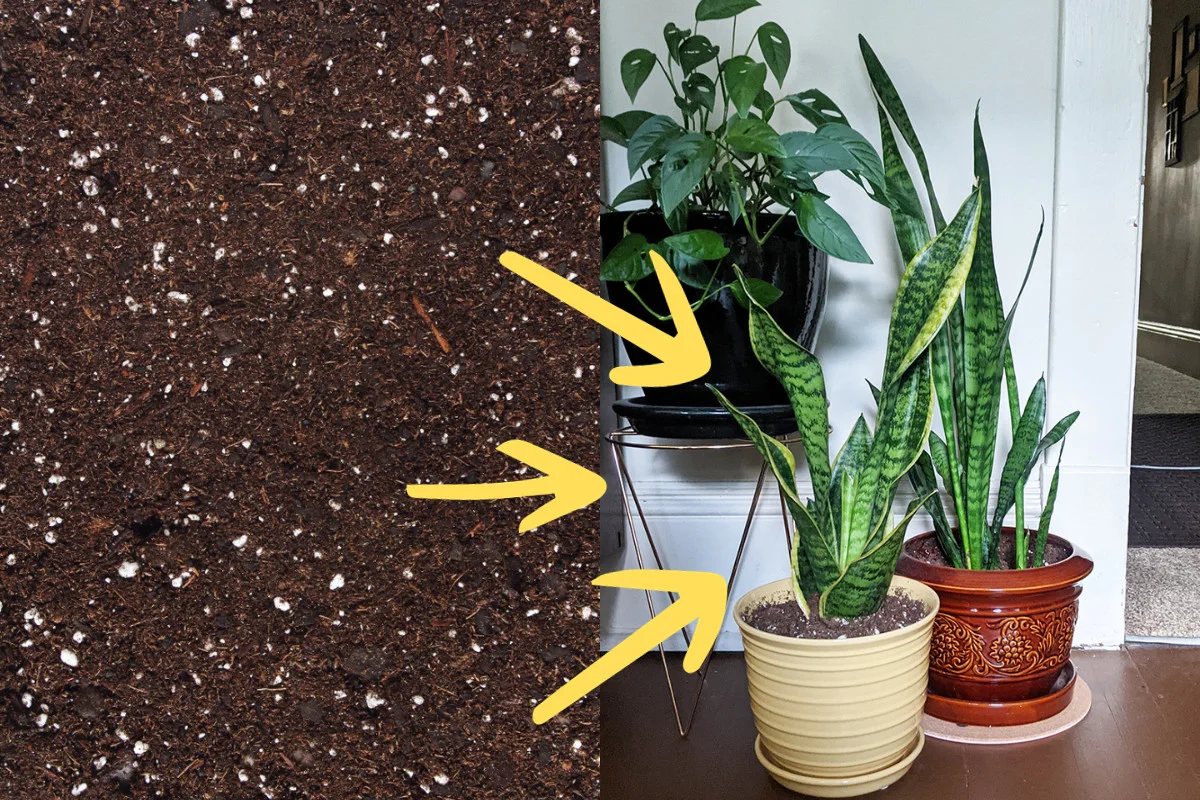
It always starts the same way – we buy a small houseplant or start a cutting with plans of tending it into this massive, bushy plant. We picture a hanging plant so full that you can no longer see the pot because it’s buried in glorious, lush foliage spilling down the sides.
And the reality ends up being a leggy little thing with a couple of spindly vines flopping over the side of the pot.
Look, if you want big, bushy plants, you have to break the rules.
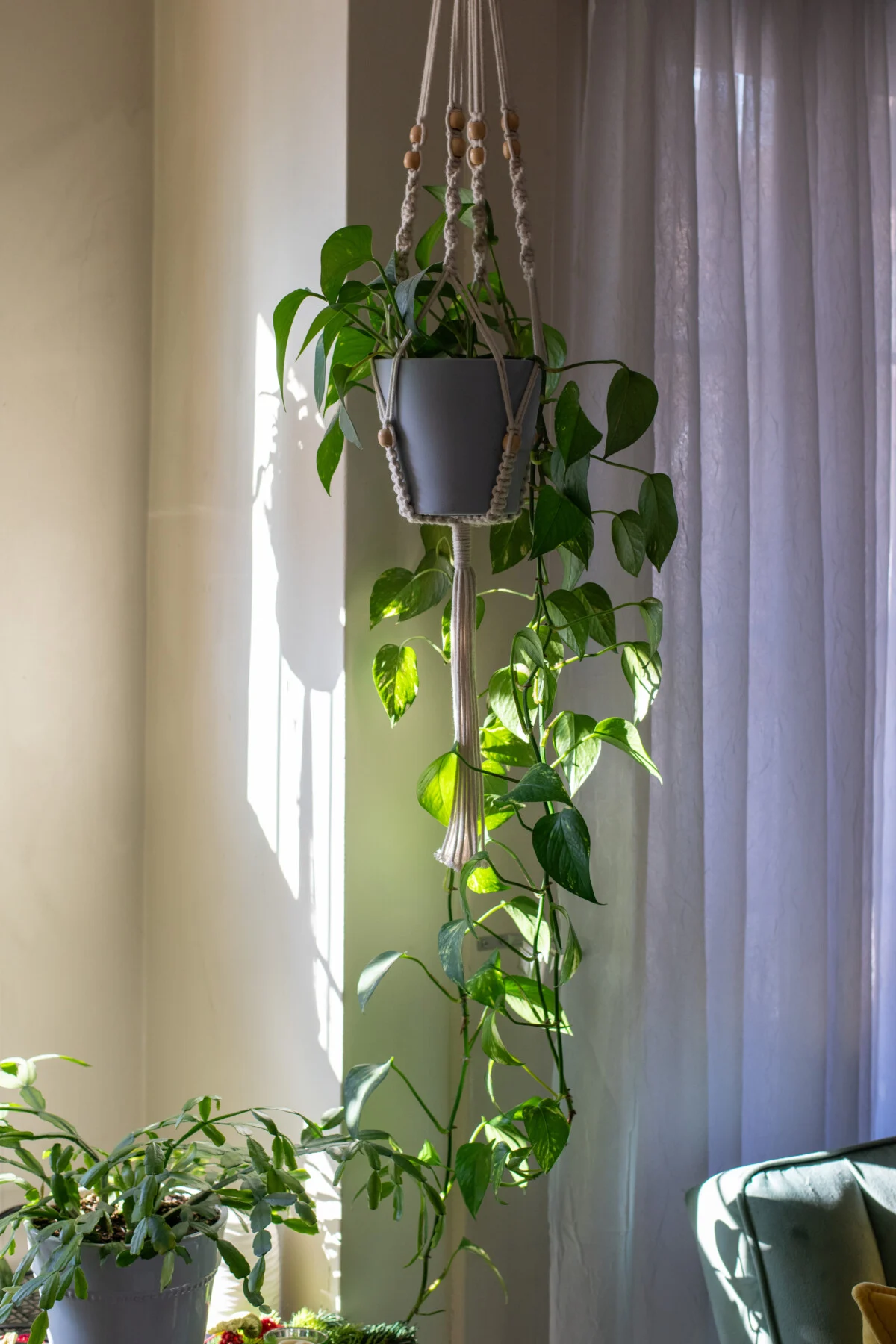
You Have to Know the Rules to Break Them
I’m going to let you in on a little secret. I’m bad at following my own advice. Do I put plants in pots with no drainage hole? Yes. Yes, I do. Do I check my plants weekly to see which ones need to be watered? Um, no. I forget half the time. Do I sterilize my plant scissors every time I use them? Hey, how about this weather, huh?
Related Reading: 12 Houseplant Mistakes Almost Everyone Makes
But there is one rule that I break with religious frequency without regret.
The results are always the same – a larger, happier, bushier plant.
The 25% Rule
You’ve probably heard that when you prune a plant, you should never remove more than 25%. Well, I’m here to call bull feathers on that little piece of advice, especially where climbing, trailing, and vining houseplants are concerned.
I’m not entirely sure how this advice ended up in the lexicon of Houseplant Rules Thou Shalt Not Break, but it’s bunk. It’s absolutely true when you’re pruning trees or fruiting vegetable plants such as tomatoes. However, it doesn’t seem to apply to most houseplants.
You see, as long as you have a healthy plant with a well-developed root system, anything that’s made to spread and climb will bounce back, even if you cut it hard.
Especially if you cut it hard.
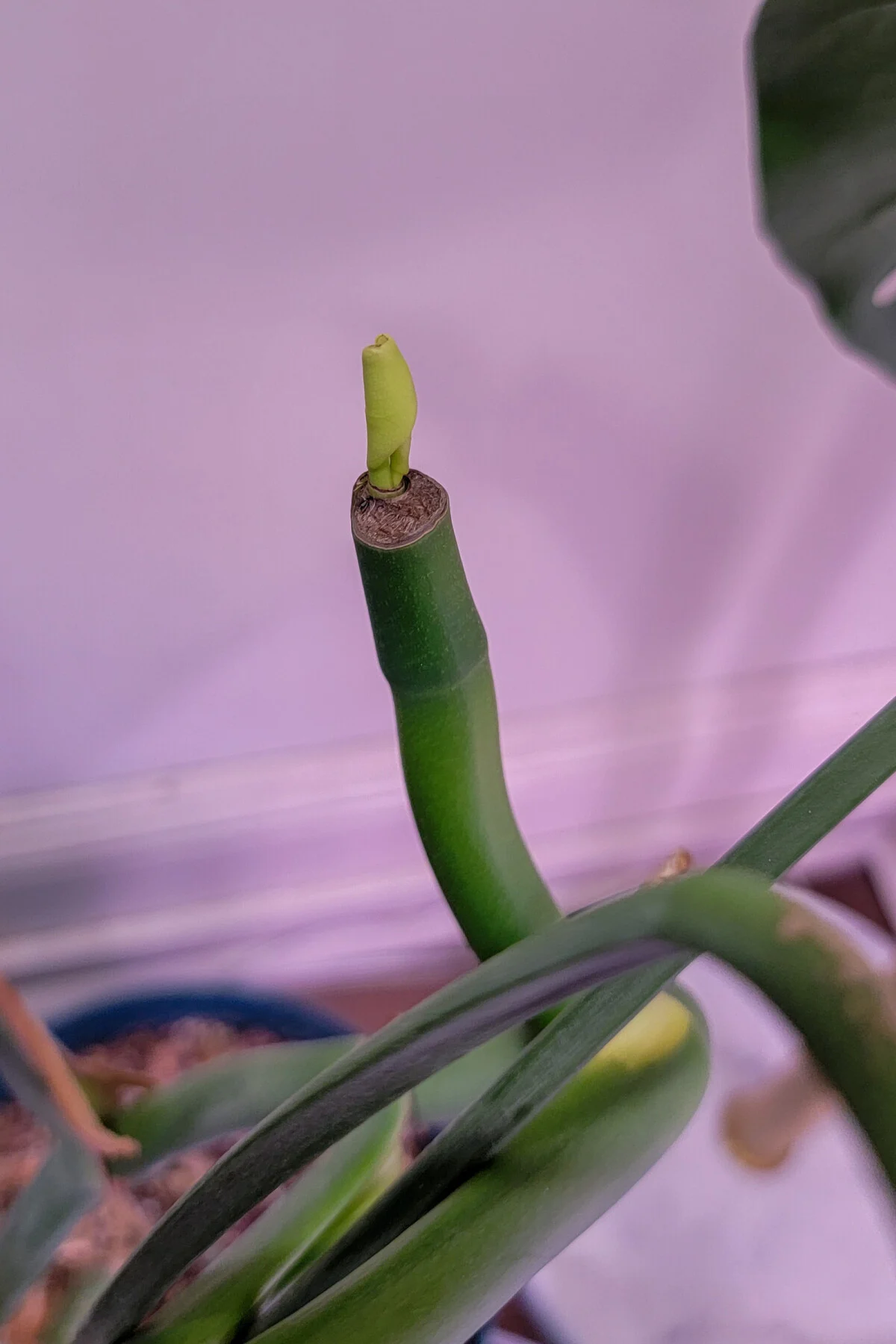
So, if you’ve got a pothos, tradescantia, philodendron, monstera adansonii, or other vining houseplant that’s gotten quite leggy, it’s time to break the rules and break out the scissors.
The 75% Rule
When I’m trying to encourage a spindly houseplant to get bushy, I turn the 25% rule on its head. I cut 75% of the plant off. This does a couple of things. It sends a message to the plant to hurry up and grow – a lot. It also encourages further root development, which is key in sustaining a bushy plant above ground.
Sometimes, that’s all you need to do.
Give your leggy plant a severe do-over. Take my beautiful Tahitian Bridal Veil (Gibasis pellucida) for example. I received a cutting from my sweety’s mom a number of years ago. It started with a few stems. Despite my best efforts, I couldn’t get the silly thing to bush out. I would tuck pieces of it back into the dirt and fold the long vines back over, making contact with the soil.
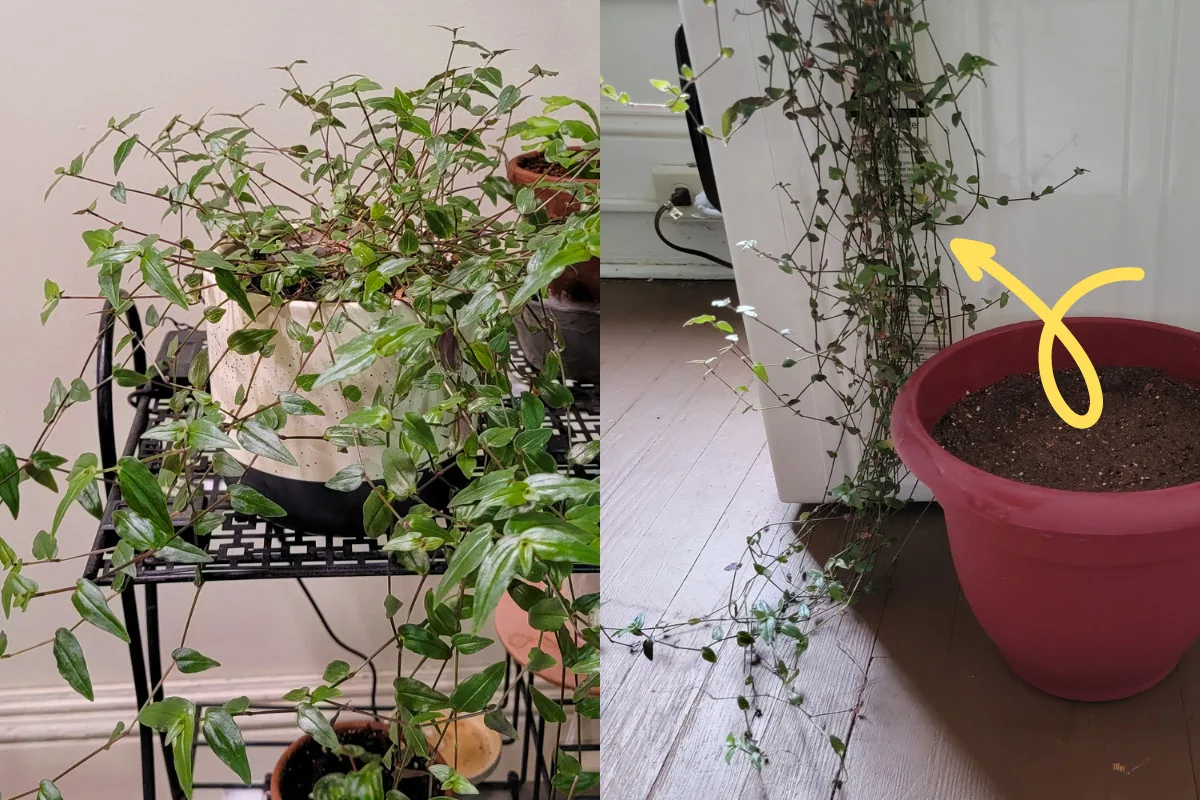
It just kept growing longer and longer into this crazy, skinny green waterfall. I had to move it out of the way each time I vacuumed. It was long but looked ridiculous growing out of the pot.
Finally, I had enough and lopped the whole thing off. I left about 4” of the plant sticking up out of the pot. I wrapped up the several feet of cut trailers and pitched them in the trash. (Did I take a picture of it? Of course, I didn’t. It’s not like I write about this stuff for a living or anything.)
Then I waited to see what would happen.
My plant got the message and started putting out a ton of new growth this past summer. By fall, it was a bushy green mass covered in tiny white flowers. It looks fantastic since it’s grown back in.
A Caveat – You Have to Have Something There to Get Bushy
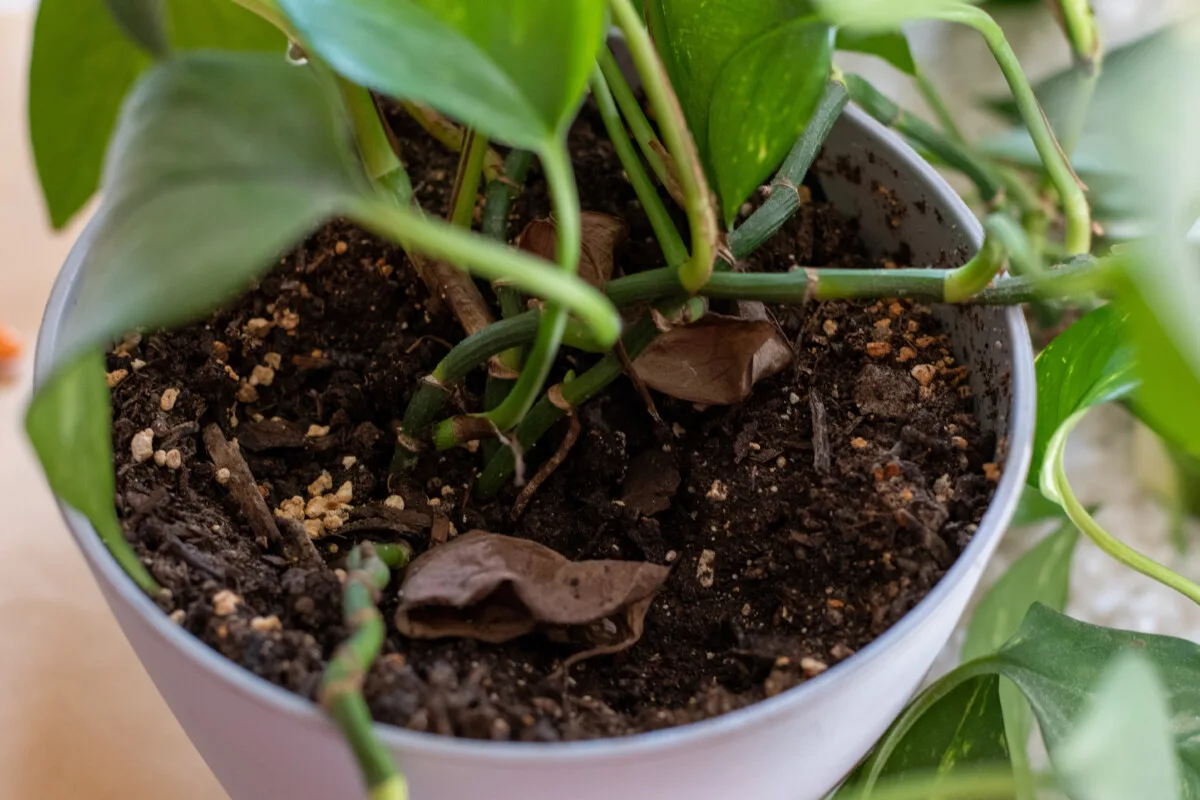
Pruning a plant hard will encourage new growth, yes, but if you want a full, bushy plant, it’s got to have the foundation for lots of foliage. The only way vining plants appear bushy is if they’re a little crowded in their pot.
If you want a full pothos hanging in your living room, and you’ve only got three or four main stems growing from the soil, that’s going to be a problem.
But it’s one we can solve together while we prune the plant back. Grab your scissors, and let’s get started. Yes, I wiped mine down with alcohol this time.
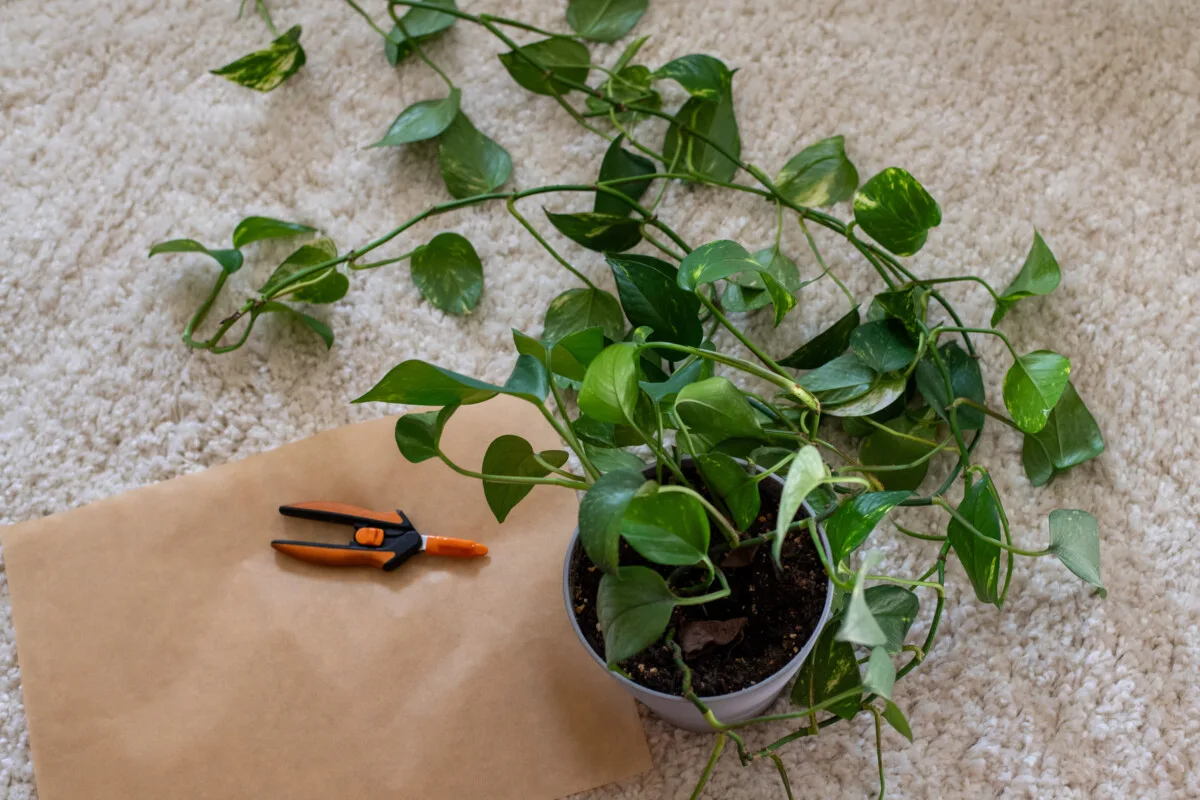
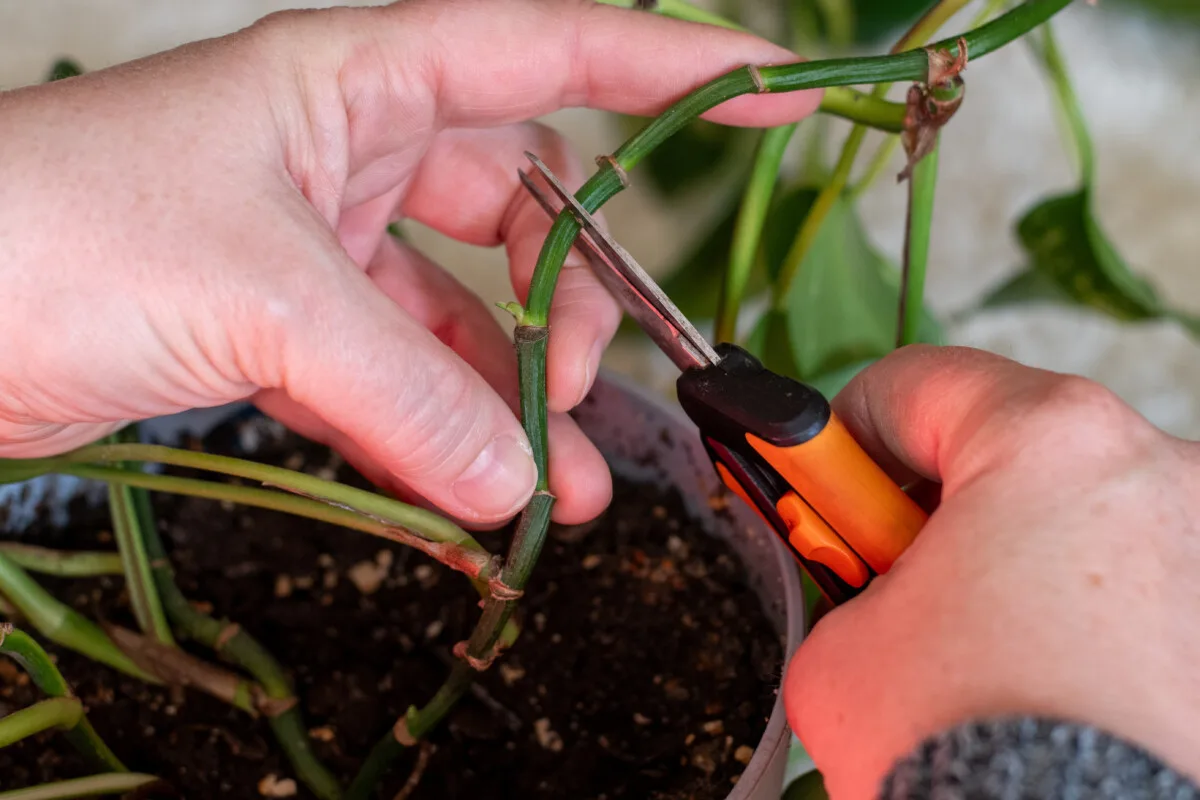
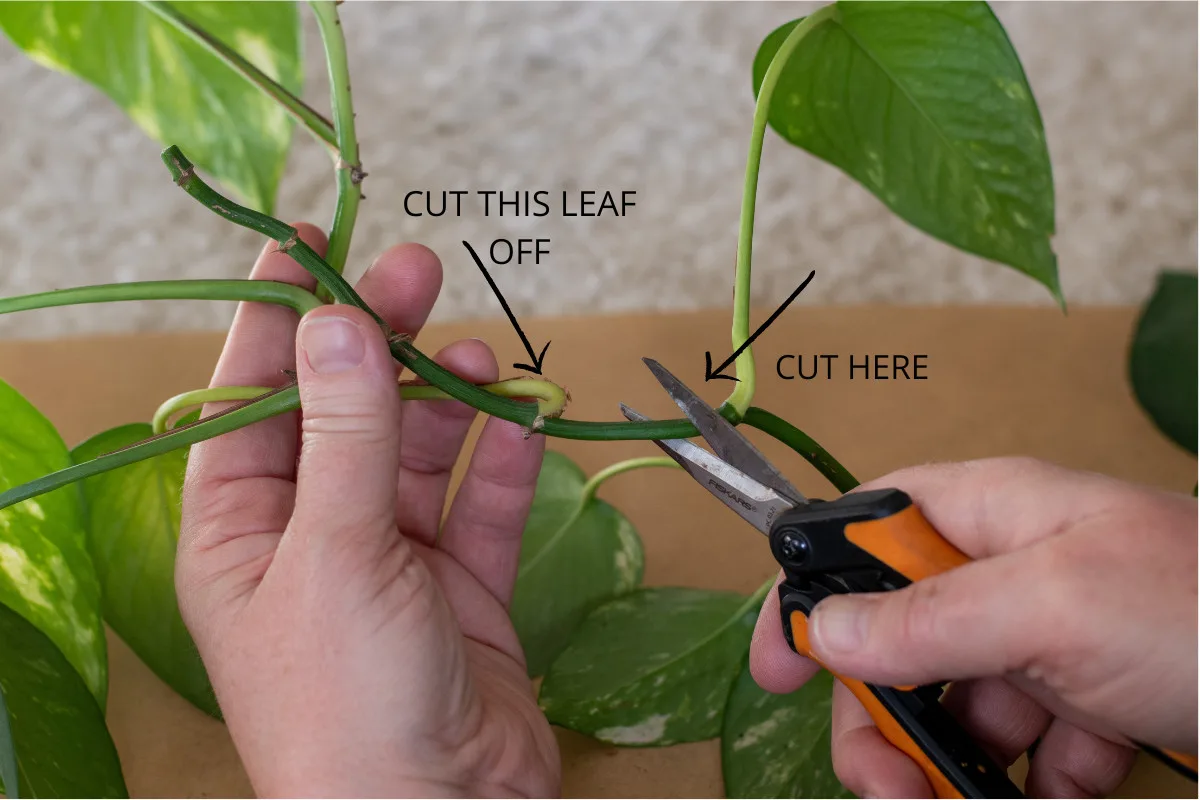
You want one leaf at the top of the cutting and a leaf node with the leaf removed below it.
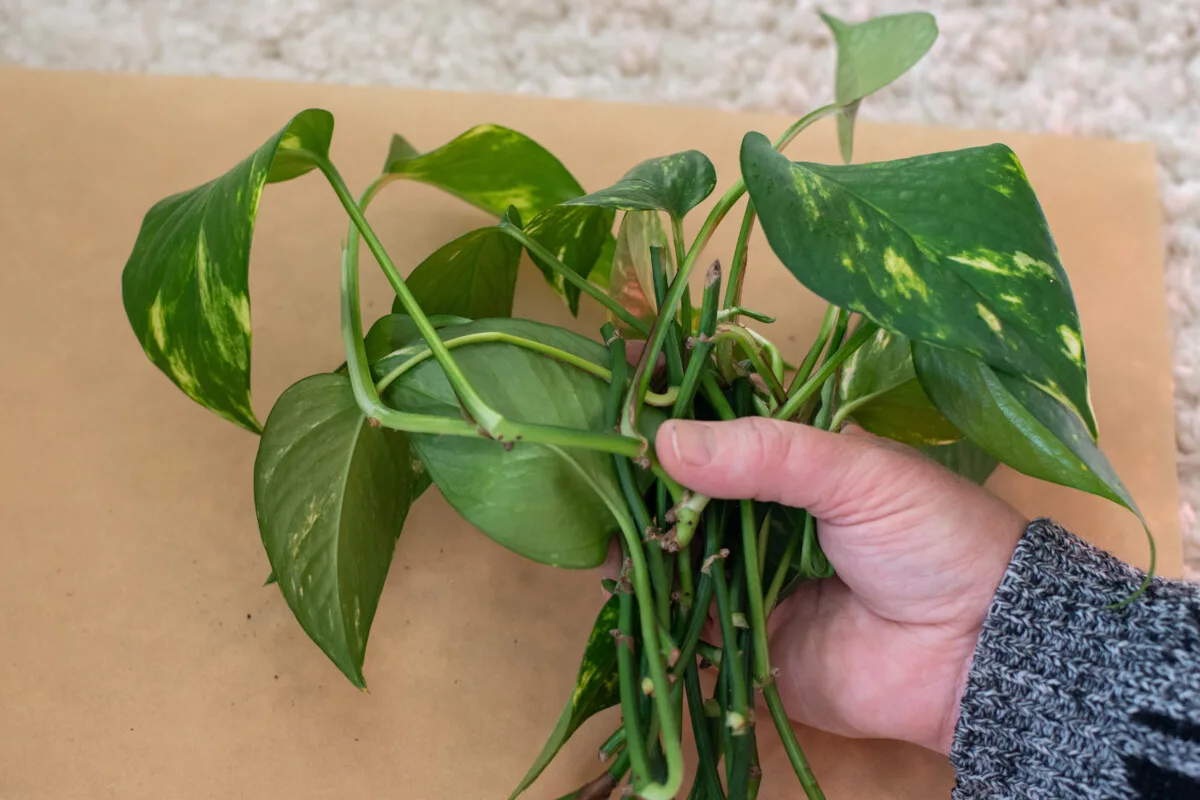
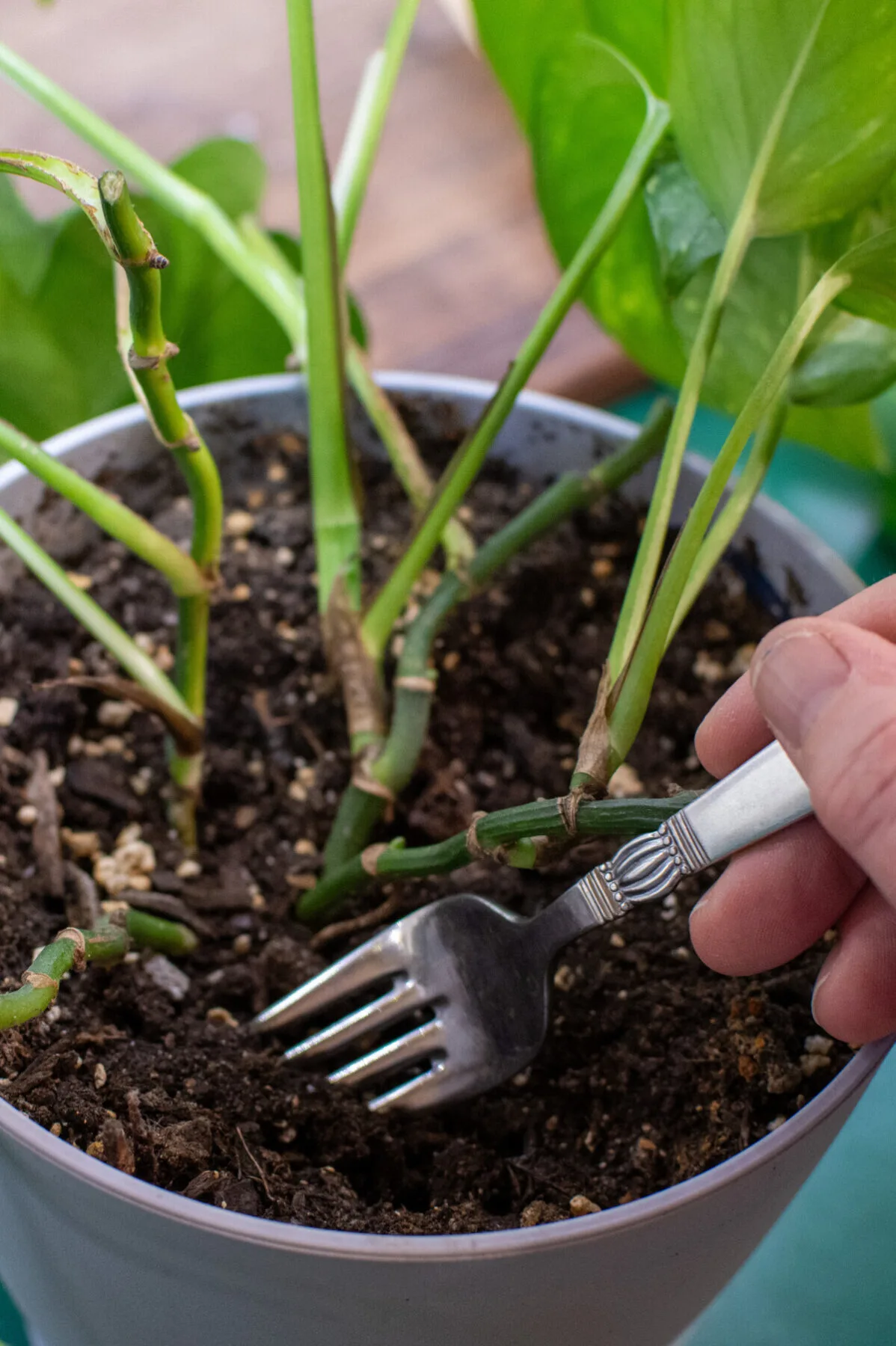
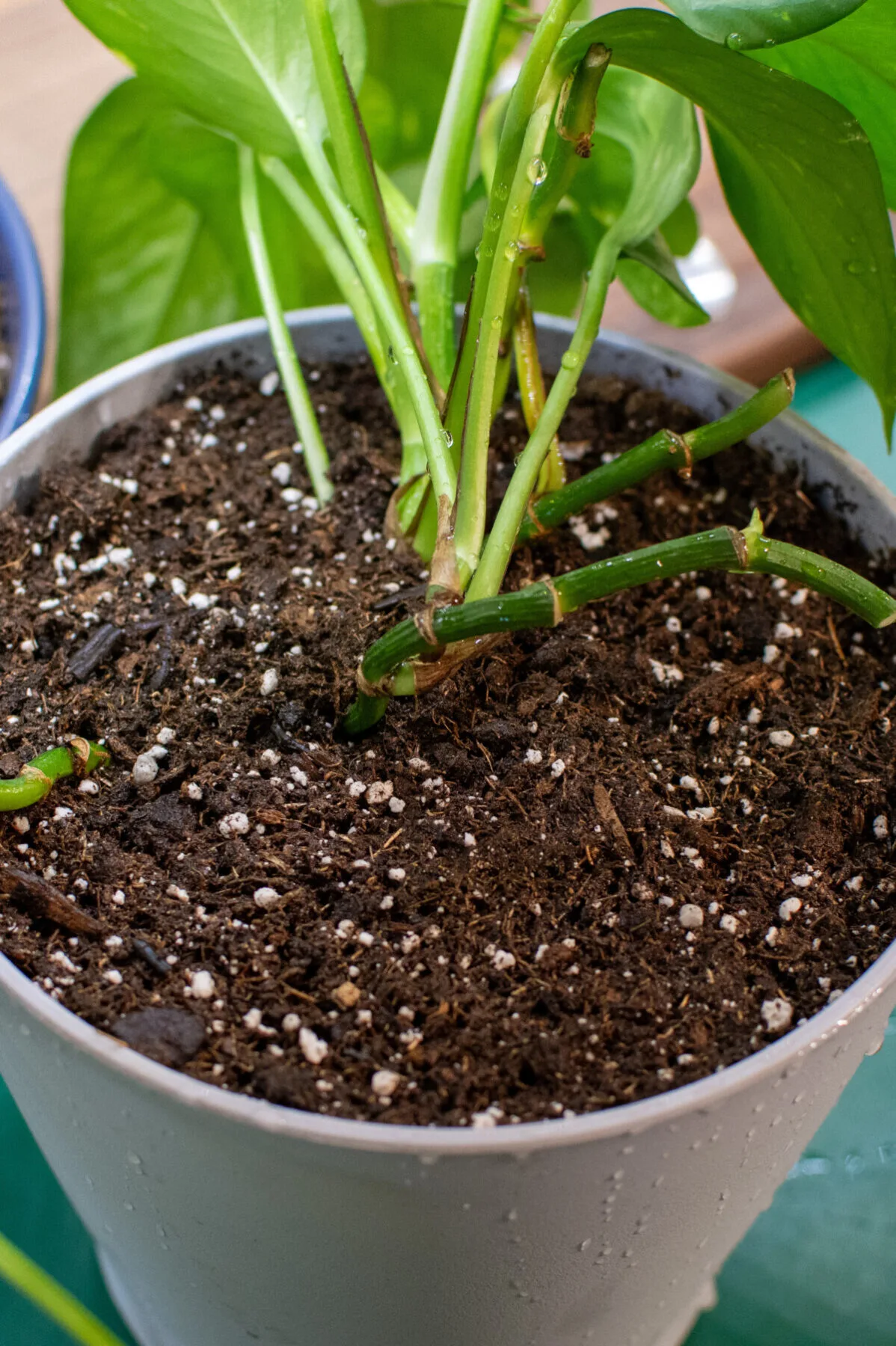
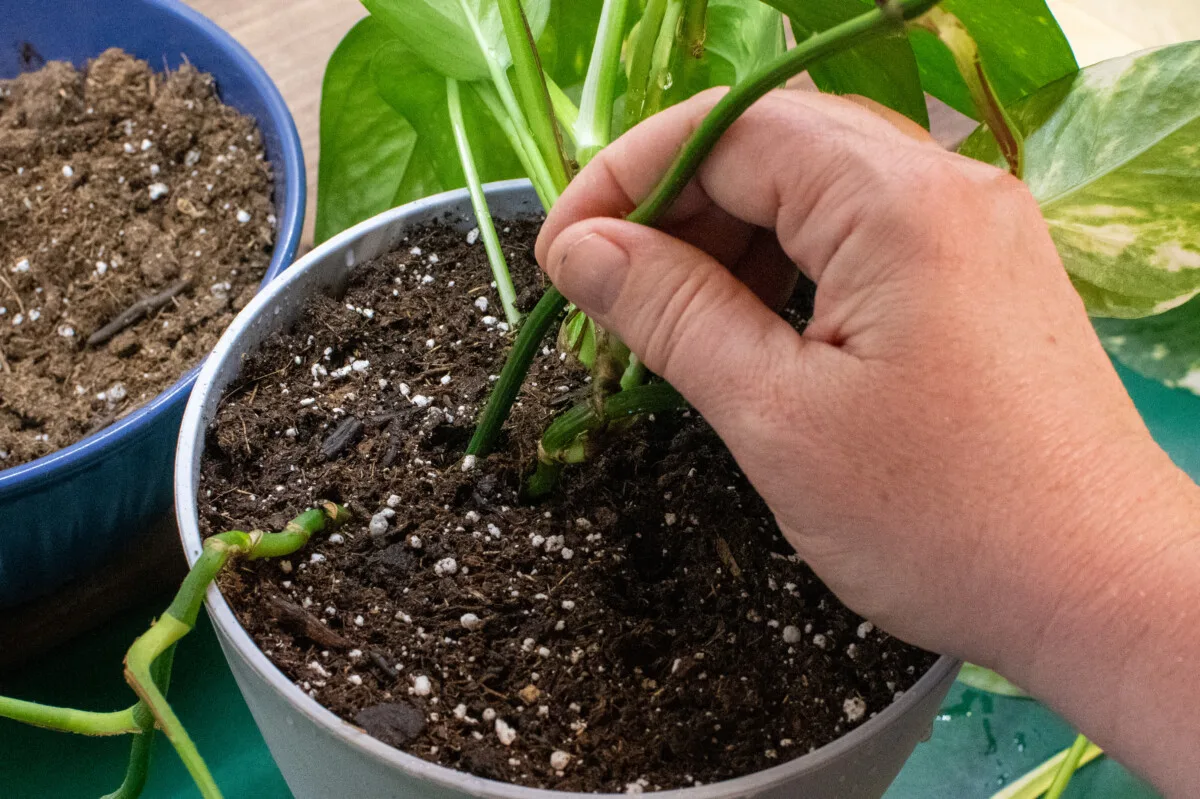
A chopstick comes in handy for making holes for the cuttings to go in.
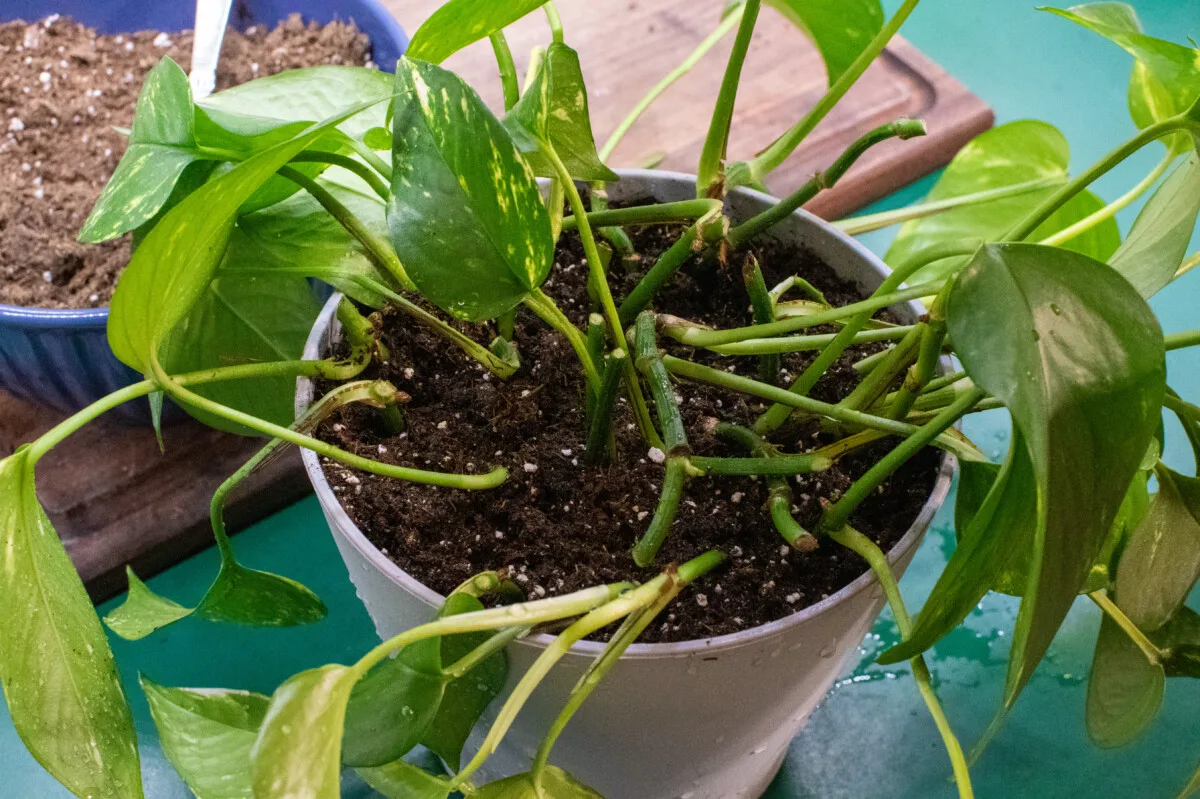
Now that you’ve pruned your plant hard and propagated some of the cuttings, you’ll need to keep the soil moist while they root. Check your plant every couple of days to ensure the soil doesn’t dry out. After a few weeks, the cuttings will root in the soil and start growing again. Trimmed stems will also begin to put out new leaf nodes.
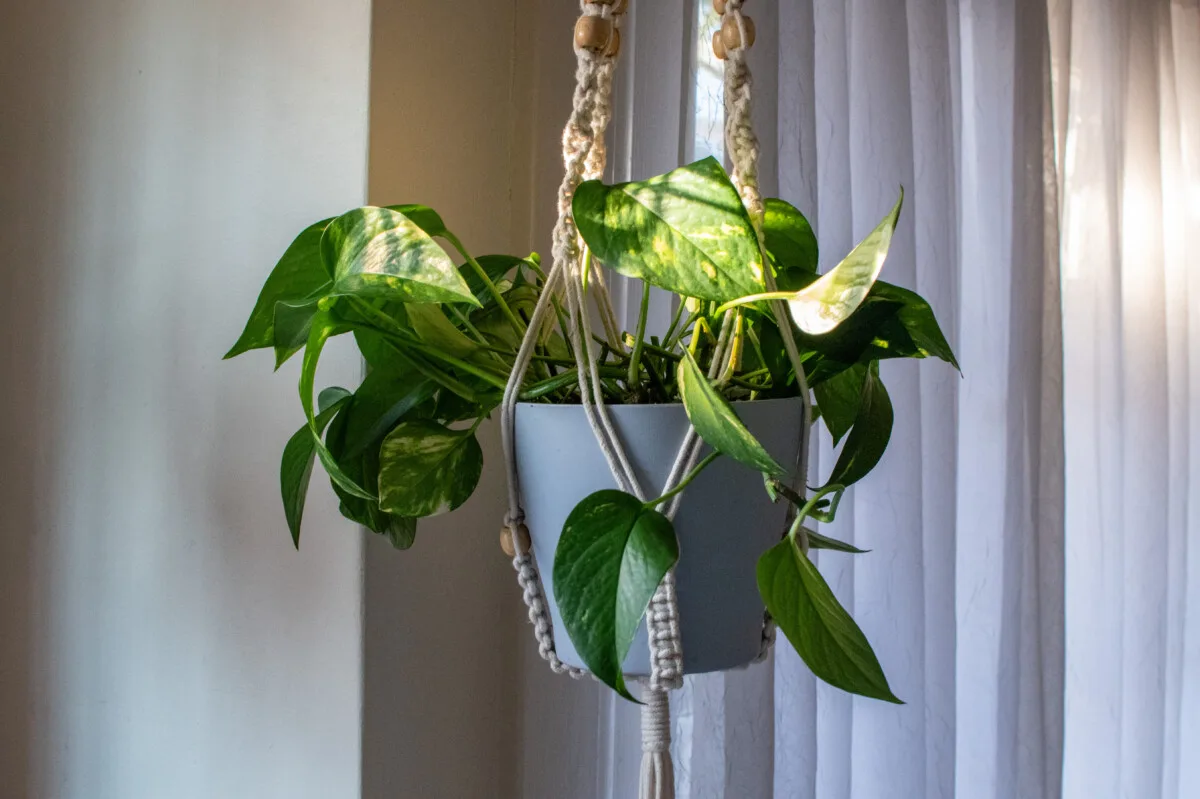
It may take a month or so, and it will seem as though nothing is happening. Then, all of a sudden, you’ll notice a bunch of new growth on your plant.
Another Caveat – Timing is Key
To get the best results, prune back leggy houseplants when they’re in their growth cycle. If the plant is dormant, it’s resting and may not have the extra nutrients needed to put on a big growth spurt. Also, plants tend to go dormant when the days are shorter. They need plenty of light to grow back when you prune them, which is easier to do when plants are actively growing during longer days of the year.
If you do cut a plant back when it’s dormant, be prepared to give it a boost with grow lights and fertilizer. And be patient. Think of how grumpy you are when someone wakes you up while you’re sleeping. The best thing to do is to wait until the plant starts growing again before making the big cut.
Not Bushy Enough for You? Try This
Prune it again
After a month or so, if you notice your plant is filling in with new growth and you want it to be bushier still, go ahead and give it another prune. But this time, follow the 25% rule. Don’t prune so hard this time around. Make a few judicious cuts to areas where you can see the plant looks a little thin. This will encourage lateral growth in that area.
Each time you prune it, you’re telling the plant – bushier, not longer.
More light, please
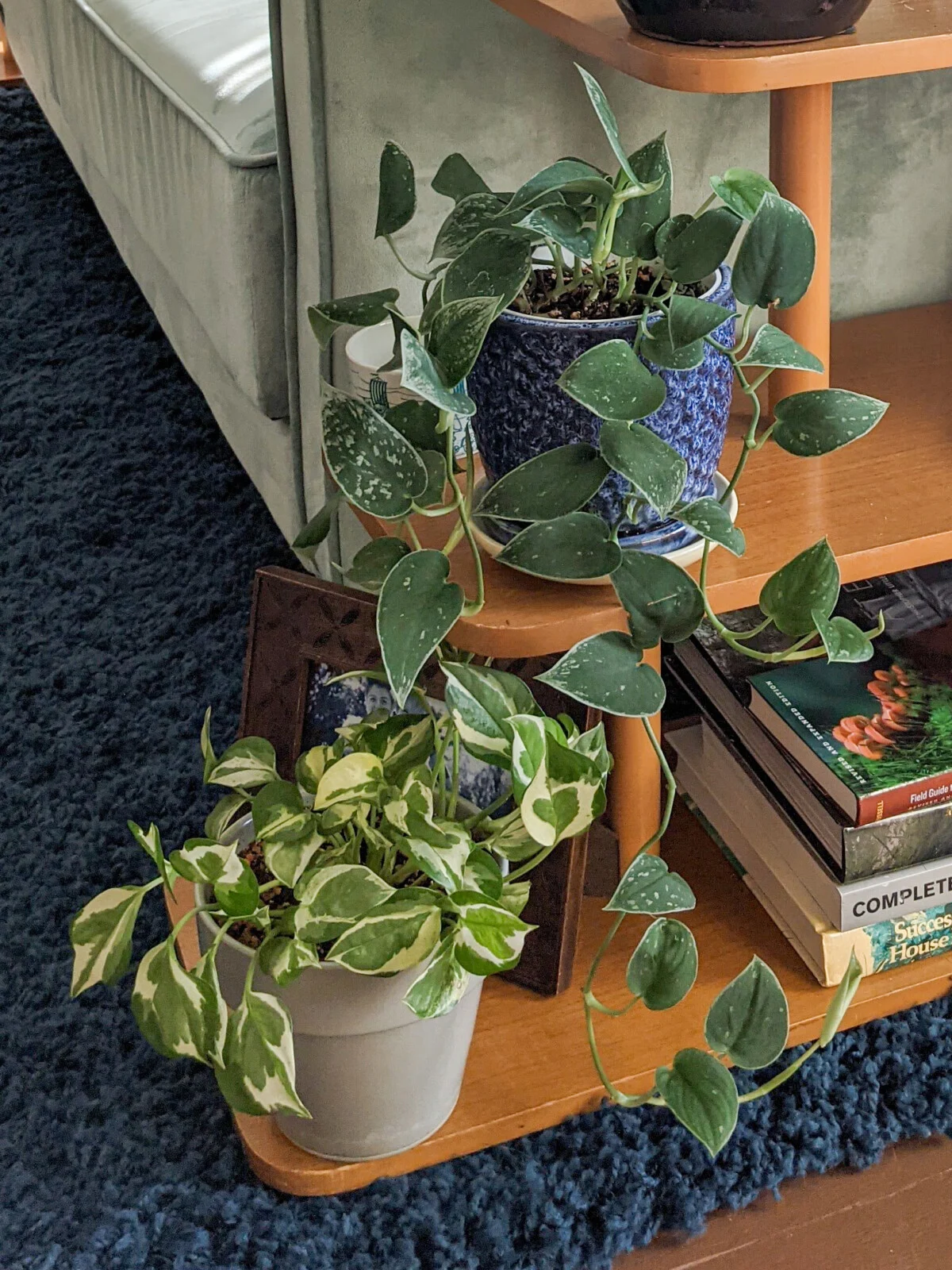
If you’ve got a solid base for your plant and you’ve pruned it hard, and it’s still looking pretty spindly, then light is the issue. Vining plants tend to stretch their creepers toward the light when they don’t receive enough. On the flip side, when they receive plenty of bright, indirect sunlight, they grow fuller, slowing their creeping growth. It takes them longer to get to the point where they start spilling down the sides of the pot, but that’s because they aren’t stretching.
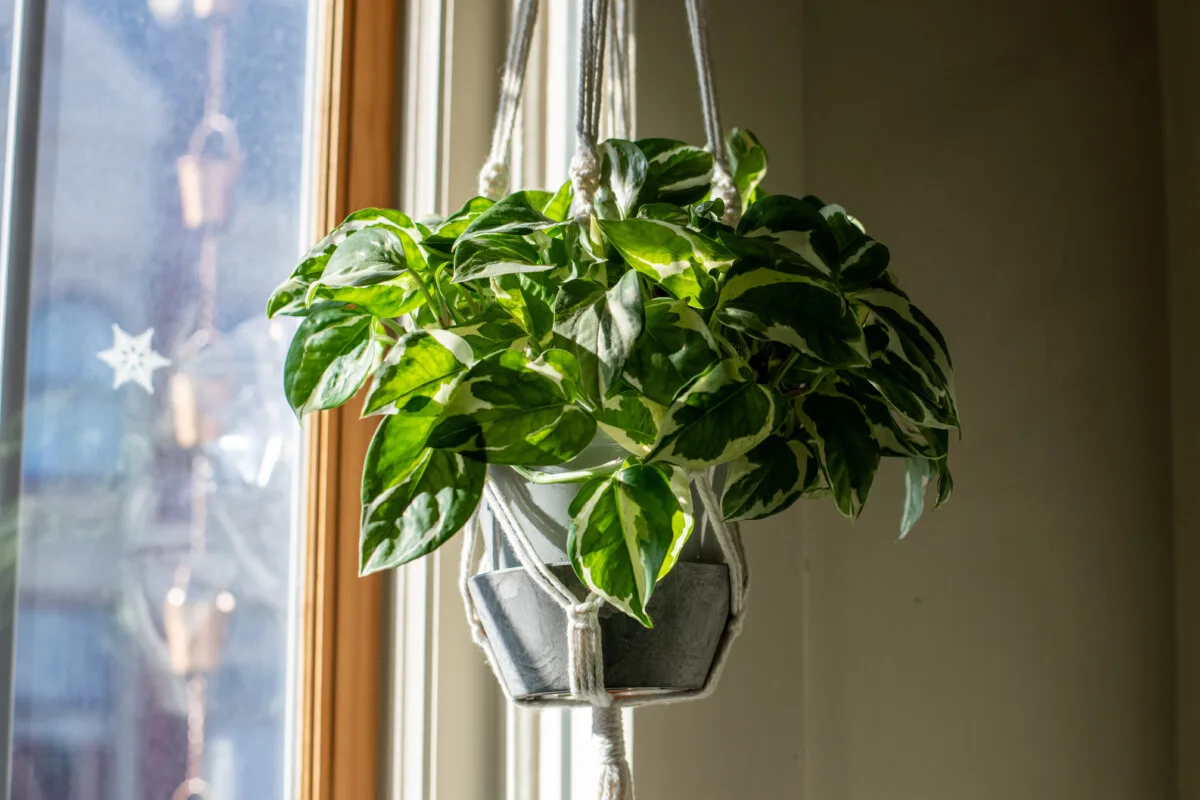
Wash, Rinse, Repeat
Unfortunately, much like maintaining a favorite haircut, regular pruning is a part of keeping certain houseplants. Because they climb and vine and creep, eventually, these types of houseplants all end up needing serious pruning to help encourage them to grow in a pleasing shape.
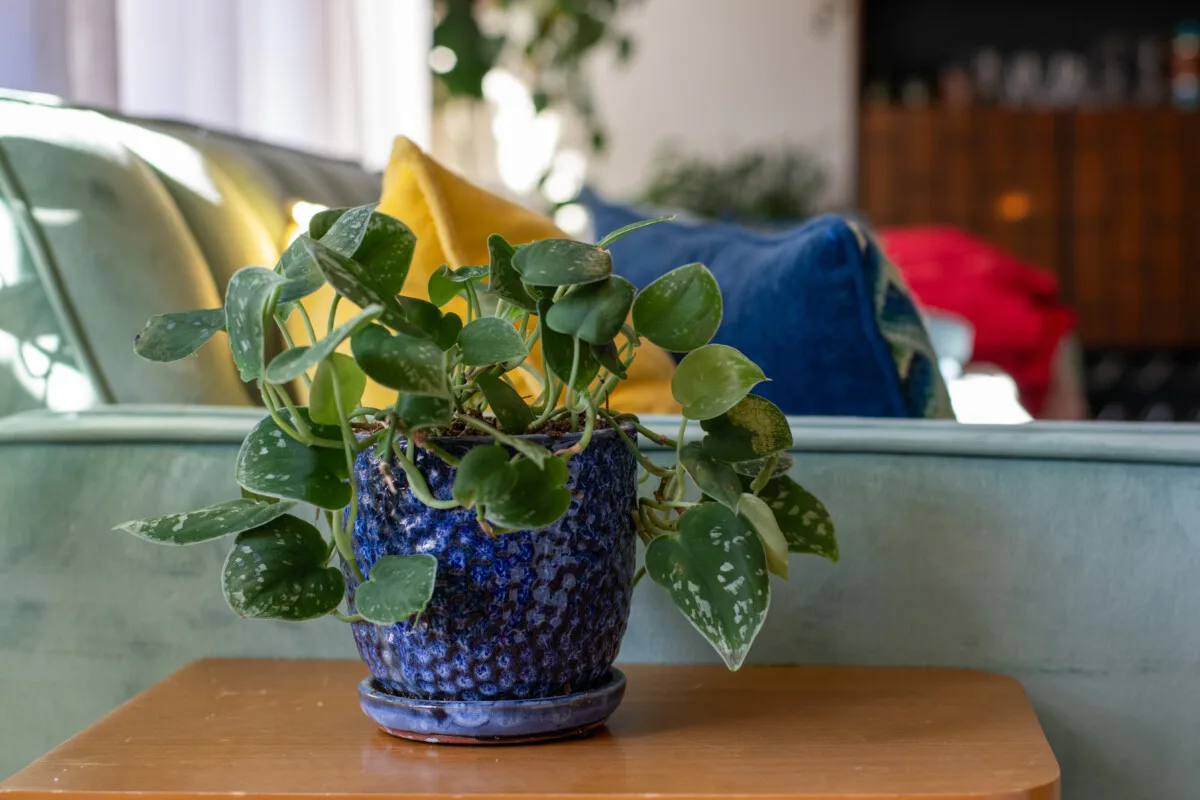
Whether it’s once a year or once every other year, to maintain a more rounded, full shape, climbing plants will need to be pruned hard. You may want to time this to coincide with repotting them, as it makes the job much easier to do when you don’t have to deal with six-foot-long runners.
Read Next:

Get the famous Rural Sprout newsletter delivered to your inbox.
Including Sunday musings from our editor, Tracey, as well as “What’s Up Wednesday” our roundup of what’s in season and new article updates and alerts.


